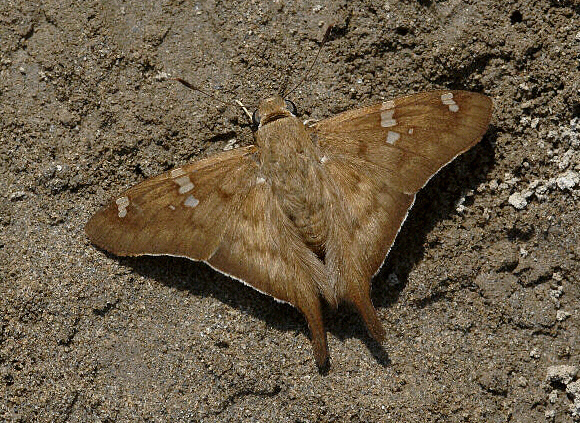
Introduction
The Pyrginae, popularly known as Flats or Spreadwings, are a cosmopolitan subfamily distributed across temperate and tropical habitats throughout the world. In the Americas there are 990 species.
The tribe Eudamini includes 44 genera in the Americas, amongst which are the Long-tailed Skippers Urbanus, Chioides and Aguna; and other familiar genera including Phocides, Autochton, Astraptes Pellicia and Polythrix.
There are several different genera of ‘tailed’ skippers occurring in the neotropical region including Urbanus, Aguna, Polythrix and Typhedanus. They can be distinguished from each other by the wing venation and by the configuration of the hyaline spots on the forewings. Additionally, in Urbanus the outer margin of the forewing is convex, but in the others it is concave to a greater or lesser degree.
There are 14 known Polythrix species. The butterflies are characterised by having a series of small hyaline windows in the forewing, which follow the same general layout as in octomaculata. The wing fringes of Polythrix species are white, whereas in the other tailed genera they are either chequered or pale brown. The tails of Polythrix tend to be stubbier than in the other genera.
The distribution of Polythrix is centred on Amazonia but some species including octomaculata have a very wide distribution covering much of the neotropical region from Mexico to northern Argentina.
Habitats
The butterfly occurs in tropical and sub-tropical areas within it’s range, at altitudes between sea level and about 800m. It is mainly associated with rainforest areas, but also occurs in transitional semi-deciduous areas.
Lifecycle
The caterpillar feeds on various tree and shrub Leguminosae including Muellera, Senna, Toluifera and Pterocarpus. It is whitish, flecked with grey, and has a yellow head with fine pink markings.
Adult behaviour
The males spend much of their time hiding under leaves, with wings spread, but will sometimes join aggregations of other Pyrgine skippers at damp sand or earth, at which time they always rest with wings outspread.
The butterflies fly from early morning until dusk, and may also fly regularly at night, as I have found them attracted to tungsten and fluorescent lighting in hours of darkness.
